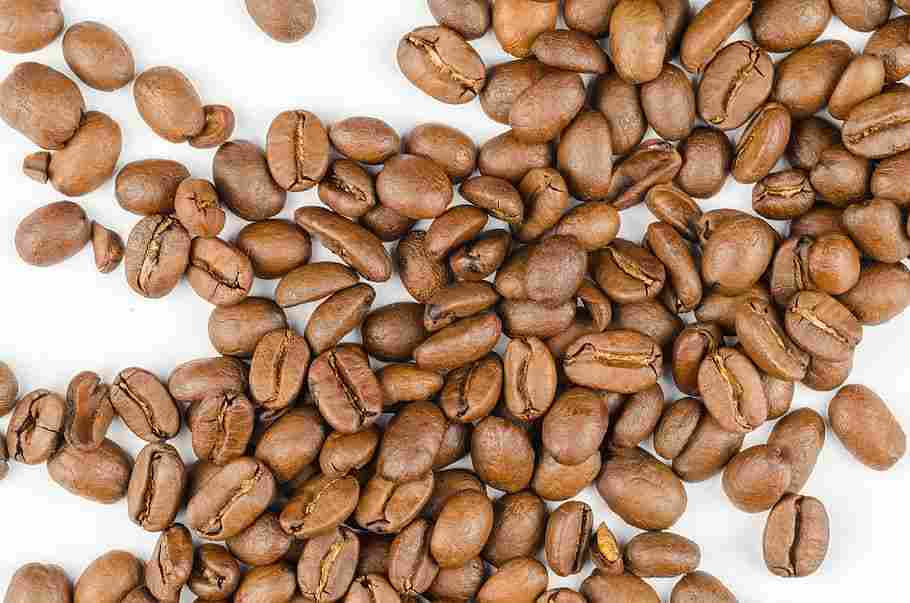Coffee roasting is a crucial step in the coffee production process that unlocks a world of diverse flavors, and captivating aromas and sets coffee beans apart from one another. It is during this transformation that green coffee beans develop their distinct characteristics and undergo a remarkable transformation. The roast level directly influences the flavor, aroma, body, and acidity of the final cup, making the types of coffee roast an essential factor for coffee enthusiasts to explore and understand.
In this guide, we delve into the world of coffee roasts, exploring the various types and their unique attributes. Whether you are a seasoned coffee aficionado or a curious beginner seeking to expand your coffee knowledge, understanding the different roast levels will help you to make informed choices and unlock new coffee experiences.
Learn how to roast coffee beans at home.
What is Coffee Roasting?

Coffee roasting is a meticulous process that involves applying heat to green coffee beans, transforming them into aromatic and flavorful beans, altering the look and taste, and more importantly preparing them to be ground and brewed.
Through the application of heat, the beans undergo a series of chemical reactions, leading to the development of complex flavors, aromas, and textures that are evident in the coffee you drink. This crucial step is where the true artistry of coffee crafting comes to life and also where the flavor of your coffee can be altered drastically.
Several key factors influence the roast level of coffee beans, each playing a vital role in determining the final flavor profile. Temperature, time, and roasting technique all contribute to the outcome.
The temperature at which the beans are roasted can vary, with higher temperatures resulting in darker roasts. The duration of the roasting process also plays a significant role, as longer roasting times lead to deeper and more pronounced flavors.
Additionally, the roasting technique employed, such as drum roasting or hot air roasting, can impact the final roast level and flavor characteristics.
Why Roasting Matters?
Understanding coffee roast levels is essential for selecting coffee that aligns with individual preferences. The range of roast levels offers a spectrum of flavors, from bright and acidic to bold and smoky.
Lighter roasts tend to preserve the distinct flavors and nuanced characteristics of the coffee’s origin, while darker roasts exhibit bolder, more caramelized flavors.
By familiarizing yourself with the different roast levels, you can make informed choices, discovering the roast that best suits your desired flavor profiles and brewing methods.
Whether you prefer a vibrant and fruity cup or a rich and robust brew, the understanding of types of coffee roasts helps you to embark on a personalized coffee journey tailored to your taste preferences.
Let’s take a look at the different types of coffee roast:
Light Roast

Light roast refers to a coffee roast level where the beans are roasted to a lighter degree, preserving the delicate flavors and characteristics inherent in the coffee beans.
During the light roasting process, the beans are roasted for a shorter duration and at lower temperatures, resulting in a light brown color and a relatively dry surface.
Light roasts are known for their lighter body and high acidity, allowing the distinct flavors of the coffee’s origin to shine through.
The flavor profile of light roast coffee is often characterized by its bright acidity, vibrant and lively flavors, and subtle sweetness. The lighter roast allows the coffee to maintain its original flavors, showcasing floral and fruity notes that can range from citrusy and tangy to tea-like and floral.
The acidity in light roasts tends to be more pronounced, adding a refreshing and crisp quality to the cup. In terms of body, light roasts are generally lighter and have a smoother mouthfeel compared to darker roasts.
Some popular coffee varieties that are commonly light roasted include Ethiopian Yirgacheffe, Colombian Supremo, and Kenyan AA. These coffees are celebrated for their complex flavor profiles, featuring bright acidity, intricate floral and fruity notes, and a delightful sweetness.
Light roast enthusiasts often appreciate the unique and nuanced flavors that these coffees offer, as they capture the essence of the specific regions and growing conditions in which they are cultivated.
Light roast coffee provides an excellent opportunity to explore the intricate flavors and subtleties of different coffee origins. Whether enjoyed as a pour-over, a delicate espresso, or a refreshing iced coffee, light roast enthusiasts can savor the bright and vibrant cup that highlights the natural characteristics of the beans.
Medium Roast

Medium roast refers to a coffee roast level that falls between light and dark roasts, striking a balance between preserving the bean’s natural flavors and developing additional complexity.
The beans are roasted for a longer duration and at slightly higher temperatures compared to light roasts, resulting in a medium brown color and a smooth, non-oily surface.
Medium roasts retain some of the brightness of light roasts while introducing a richer flavor profile.
The flavor profile of medium roast coffee is characterized by a well-rounded balance of acidity, body, and flavor notes. Medium roasts offer a pleasant acidity that is more moderate compared to light roasts, providing a gentle tang that complements the coffee’s inherent flavors.
The body of medium roast coffee is medium to full-bodied, creating a satisfying mouthfeel that is neither too heavy nor too light. Flavor notes in medium roast coffees can range from nutty and caramel-like to chocolatey and toasty, with hints of sweetness and subtle undertones.
Popular coffee varieties that are often medium roasted include Brazilian Santos, Guatemalan Antigua, and Costa Rican Tarrazu. These coffees exhibit a versatile flavor profile that appeals to a wide range of coffee drinkers.
Medium roasting allows these beans to develop a pleasant balance of acidity and sweetness while maintaining their distinct regional characteristics. With their smooth yet flavorful profiles, medium roast coffees are often enjoyed in various brewing methods, including drip brewing, French press, and espresso.
Medium roast coffee strikes a harmonious balance between the brightness of light roasts and the richness of dark roasts, making it a popular choice for those seeking a well-rounded and approachable cup. Whether you prefer a comforting morning cup or an afternoon pick-me-up, medium roast coffees offer a delightful combination of flavors that are both familiar and captivating.
Dark Roast

Dark roast refers to a coffee roast level where the beans are roasted for an extended period, resulting in a dark brown to nearly black color and a shiny, oily surface.
Dark roasting involves higher temperatures and longer roasting times, which leads to the development of deep, intense flavors and a distinct appearance.
When it comes to types of coffee roast, dark roasts are known for their bold and robust character, offering a different experience compared to lighter roasts.
The flavor profile of dark roast coffee is characterized by its boldness, low acidity, and pronounced roasty, smoky, or even charred flavors.
The longer roasting time brings out rich, caramelized sugars and oils from within the beans, resulting in a bittersweet taste with a lingering finish. Dark roast coffees often exhibit a fuller body, offering a heavier mouthfeel and a sense of depth.
While acidity tends to be low in dark roasts, some varieties may still retain a subtle brightness.
Well-known coffee varieties that are often dark roasted include Italian Roast, French Roast, and Sumatra Mandheling. These coffees are chosen for their ability to withstand the intense heat of the dark roasting process while maintaining their distinct flavors.
Italian Roast and French Roast are characterized by their bold and smoky profiles, while Sumatra Mandheling offers earthy and herbal notes. Dark roast enthusiasts appreciate the rich and bold flavors that these coffees deliver.
Dark roast coffee offers a captivating and robust experience, appealing to those who prefer a more intense and deeply flavored cup. Whether enjoyed as a bold espresso shot, a strong drip brew, or a base for rich and indulgent specialty drinks, dark roast coffees provide a distinctive flavor profile that stands out.
Other Roast Levels
In addition to the commonly known light, medium, and dark roast levels, there are other types of coffee roast that offer unique characteristics and flavor profiles. These include extra light, cinnamon, medium-dark, and espresso roast.
- Extra Light Roast: Also known as “blonde” or “white” roast, extra light roast retains the lightest color and preserves the highest level of acidity. It showcases the coffee’s delicate flavors with subtle floral and fruity notes.
- Cinnamon Roast: Cinnamon roast is a light roast level where the beans have a light brown color, similar to the color of cinnamon. This roast level highlights the coffee’s brightness, acidity, and the nuances of its origin, resulting in a vibrant and lively cup.
- Medium-Dark Roast: Falling between medium and dark roast, medium-dark roast strikes a balance between rich flavors and the preservation of the bean’s origin characteristics. It offers a deeper, more pronounced body and a slightly bittersweet taste, while still retaining some of the nuanced flavors of the coffee’s origin.
- Espresso Roast: Espresso roast is a dark roast level specifically tailored for espresso brewing. It is characterized by its deep, dark color and robust flavors. Espresso roast beans are roasted longer to withstand the high-pressure extraction process, resulting in a concentrated and intense coffee with a thick crema.
Each of these roast levels presents a distinct flavor profile that caters to different preferences and brewing methods. Extra light and cinnamon roasts appeal to those who enjoy brighter and more nuanced flavors, while medium-dark roast strikes a balance between richness and origin character. Espresso roast, on the other hand, offers a bold and concentrated flavor ideal for espresso-based beverages.
Factors Affecting Roast Levels

The final roast level of coffee is influenced by various factors that contribute to the beans’ origin, growing conditions, and processing methods. These factors include the bean’s origin, altitude, and processing methods.
- Bean Origin: Coffee beans sourced from different regions around the world possess unique flavor profiles. Certain origins are known for producing beans that excel at specific roast levels. For example, beans from Central America often lend themselves well to light to medium roasts, while beans from Indonesia and South America are favored for darker roasts.
- Altitude: The altitude at which coffee is grown can impact its flavor development and density. High-altitude beans tend to have a higher acidity and more delicate flavors, making them suitable for lighter roasts. Lower-altitude beans, on the other hand, often exhibit a fuller body and are commonly used for darker roasts.
- Processing Methods: Coffee beans undergo different processing methods, such as washed, natural, or honey process. These methods affect the moisture content and sugars within the beans, which in turn can influence the roast level and resulting flavors. The inherent characteristics of the processing method can complement or contrast with specific roast levels, leading to unique flavor profiles.
The interplay between these factors and roast levels creates a vast array of flavor possibilities. Light roasts tend to highlight the inherent characteristics of the bean and origin, with brighter acidity and more pronounced fruity or floral notes.
As the roast level progresses towards medium and dark, the flavors evolve to incorporate more caramelization and roasty profiles, accompanied by a deeper body and reduced acidity.
The combination of bean origin, altitude, and processing methods with the chosen roast level creates a complex tapestry of flavors in each cup of coffee. Roasters carefully consider these factors to achieve the desired flavor profile and to highlight the unique qualities of the beans.
Understanding these influences allows coffee enthusiasts to appreciate the intricate relationship between origin, roast level, and flavor development.
Choosing the Right Roast Level

A. When it comes to selecting the ideal roast level, it largely depends on personal preferences and the brewing method used. Understanding how different roast levels impact the flavors, acidity, body, and even caffeine content can help guide your choices.
- Flavors: Lighter roasts tend to preserve the inherent flavors of the coffee bean, showcasing their unique characteristics and allowing delicate notes to shine. Medium roasts strike a balance between the bean’s origin and the caramelized flavors, offering a harmonious combination. Dark roasts bring out bolder, roasty, and smoky flavors, often with diminished acidity and increased bitterness.
- Acidity: Lighter roasts generally have higher acidity, which can lend brightness and vibrancy to the cup. As the roast level progresses, the acidity tends to mellow and become more balanced or even lower in darker roasts.
- Body: The body of coffee refers to its mouthfeel or texture. Lighter roasts typically have a lighter body, while darker roasts tend to exhibit a fuller and heavier body, sometimes with an oily texture.
- Caffeine Content: Contrary to popular belief, the caffeine content in coffee is not solely determined by the roast level. While it is true that lighter roasts generally contain slightly more caffeine due to shorter roasting times, the difference is relatively minimal and can vary based on factors like bean origin and brewing method.
B. To choose the right roast level, consider the following:
- Personal Taste: Experiment with different roast levels to discover your preferred flavor profile. If you enjoy bright, fruity, and vibrant flavors, light to medium roasts might be your go-to. For those seeking a richer, bolder, and smokier experience, dark roasts may be the way to go.
- Brewing Method: Different brewing methods extract flavors differently, and certain roast levels may complement specific methods better. For example, light roasts often shine in pour-over or drip brewing methods, while dark roasts are commonly used for espresso due to their bold flavors and ability to cut through milk.
Embrace the opportunity to explore and experiment with various roast levels. Consider trying a range of single-origin coffees at different roast levels to experience the nuances each one has to offer.
The Final Sip
Understanding the different types of coffee roast opens up a world of flavors and possibilities. From the vibrant flavors of light roasts to the balanced and versatile medium roasts, and the bold and robust characteristics of dark roasts, each roast level offers a unique taste experience.




